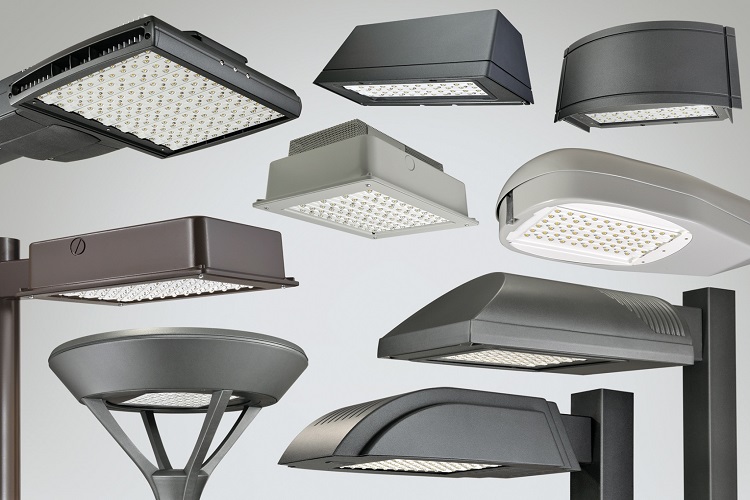LEDs: LEDs are light emitting diodes that emit light. LEDs first appeared in the 1960s, emitting a low‐intensity red light and were used as indicator lights. Over the years, LEDs have evolved rapidly and are now available across the visible, ultraviolet, and infrared wavelengths with very high brightness and power. It has thus become possible to use LEDs in various lighting applications, with illumination distances of 400 feet (150 meters) or more.
Current LEDs are very robust. High‐quality LEDs typically have good colour consistency, high lumen efficacy, and can maintain high lumen output over the LED’s lifetime. As a digital technology, it is possible to manipulate the light colours and light levels across a continuum.
OPTICS: Optics manages the distribution of light. Specially designed lens systems should have a unique inner and outer profile to allow maximum spacing between the poles and cover higher road widths. Optics should be arranged in multiple layers to ensure adequate luminance and luminance uniformity in the unlikely event of individual LED failure.
THERMAL: LED sources generate heat via conduction, though not in the light produced. Heat dissipation, (i.e., removing heat from the LED source) is critical to lumen maintenance, light output, light color, light quality, and lifetime since heat negatively affects these factors.
- Driver: The driver provides the right amount of current to the LEDs and is an important part of total system reliability. Besides providing a stable flow of current, the driver is responsible for all intelligence, such as dimming and sensor interfacing.
- Luminaire: This houses all the components and is responsible for effective protection from dust and water ingression, as well as heat management.
- Fixture: Mechanical components such as the pole and internal cables complete the fixture and connect the luminaire to the underground cables supplying electricity.
LED LUMINARY PARAMETERS:
- Lumen output (Lm): Amount of light emitted by the light source.
- Lamp wattage (W): Amount of electricity required by the lamp to emit the lumen output.
- Luminous efficacy (Lm/W): Luminous or lumen efficacy measures the efficacy of the light source. It measures how much light is being emitted by the LED light source per unit of power and is expressed in lumen per watt of electricity used.
- Watts per square meter (W/m2): The amount of power required for each lighting appliance to illuminate a road surface to the required light level.
- Lifetime (hours): For LEDs, industry defines lifetime as the point when the LEDs lumen output reaches 70% of the original.
- Color Rendering Index (CRI): An index used to measure an artificial light’s ability to reproduce the colours of an object, relative to the natural light source (the sun) with CRI of 100. Higher CRI means better visibility.
BENEFITS OF LED LIGHTING SYSTEM:
- High lumen efficacy: Currently, commercially available luminaries typically have efficacy levels of 90‐100 lm/W.
- Directional and Reduced Light Pollution: LEDs’ directional contributes significantly to their energy saving potential. LEDs provide directional light, reducing light wastage and directing the light where it is most needed.
- Long lifespan: Laboratory testing and experience indicate that well‐produced LED systems last 50,000 hours or more, depending on usage.
- Superior quality of light: LED lighting has a high CRI, which together with its white light, offers enhanced night time visibility, making the roads brighter and safer.
- Extended controllability: LED lighting is a digital technology making dimming and similar control functions possible and easy.
- Durability: LEDs are highly resistant to vibration and other mechanical stress making them suitable for road lighting, especially on bridges, elevated highways, and where there may be risk of vandalism.
- Lower lifetime cost: During its much longer lifetime of 50,000 hours, the total cost of ownership of an LED road lighting system is lower by 50% or more.
- Road safety: LED road lighting provides better quality light, which increases visibility for both drivers and pedestrians.
- Energy savings, environmental benefits: Road lighting forms a significant part of overall energy consumption by lighting. Besides the energy savings, a shift to LED technology results in an equivalent drop in GHG emissions, about 0.6375 Kg per kWh saved.


